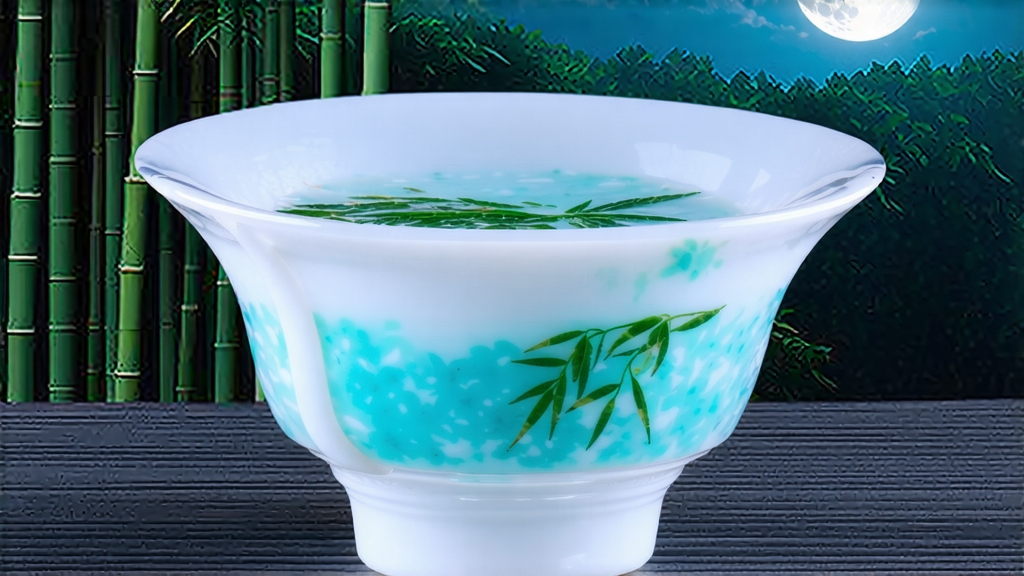
Tucked high on the forested ridges of Yunnan’s southern mountains, where the Mekong bends like liquid jade, a tea is made only when the moon is full and the air smells of night-blooming orchids. Locals call it Yue Guang Bai—Moonlight White—yet no poet has fully captured the way its leaf seems to store lunar luminescence, or how its liquor tastes like pear blossom dissolved in alpine snow. To international drinkers accustomed to the grassy minimalism of Fujian’s Silver Needle, Yue Guang Bai arrives as a gentle revelation: a white tea that carries the honeyed heft of a light oolong and the cool hush of a Himalayan night.
Historical haze
Written records mentioning “white cakes from Simao” appear as early as the Ming dynasty, but Yue Guang Bai’s modern identity crystallized only in 2003, when a small factory in Jinggu County experimented with withering leaf under open sky rather than indoors on bamboo trays. Farmers noticed that night exposure preserved more aromatic terpenes; the tea smelled less like hay, more like lychee. A regional merchant christened it “Moonlight” because the finished leaf is dark on one side, silvery on the other, resembling a moonlit mountain slope. Within five years the style had migrated to Lincang and even Dehong, each micro-watershed lending its own cadence of mist and mineral.
Botanical lineage
Unlike classic white teas built on the small-leaf Fujian cultivar Fuding Da Bai, Yue Guang Bai is almost always crafted from Camellia taliensis, a close cousin indigenous to Yunnan’s 1,800–2,200 m elevations. Taliensis leaves are broader, waxier, and richer in long-chain amino acids, translating into a creamier mouthfeel. Some old-garden trees exceed 200 years, their roots intertwined with wild pepper vines and orchids, adding subtle spice and floral ether to the leaf. Because the plant is naturally pest-resistant, farmers rarely spray chemicals; the tea passes EU pesticide limits more easily than many flatland greens.
Crafting by moonlight
The harvest begins at 11 p.m., when dew has cooled the leaf and mountain humidity hovers around 75 %. Head-lamps are forbidden; pickers rely on moon and starlight to select only the freshest two leaves and a bud. Tradition claims that electric light would “wake up” the leaf, coarsening its flavor. Baskets are woven from fragrant bamboo to discourage bruising, and the journey to the withering shed takes no longer than 30 minutes.
Withering occurs on raised mesh racks inside an open-walled pavilion. For 48–60 hours the leaf rests under a ceiling of mosquito netting, exhaling moisture while inhaling night air laden with jasmine and pine pollen. Temperature fluctuation is crucial: noon heat hovers near 28 °C, midnight dips to 14 °C. This diurnal rhythm stalls oxidation at 5–8 %, preserving catechins yet encouraging the formation of floral lactones. No rolling, no pan-firing—only a final 20-minute sun-bath at dawn to drop residual moisture to 8 %. The result is a leaf that looks like a charcoal sketch of a tea: one side charcoal-jade, the other moon-silver.
Compression and aging
Although sold loose, Yue Guang Bai is frequently stone-pressed into 100 g mini cakes reminiscent of bird’s nests. Compressed lightly—just 5 kgf/cm²—the cakes retain air channels that allow micro-oxidation to continue. Stored below 25 °C and 65 % humidity, the tea darkens slowly, trading fresh lychee for dried apricot, then rose-hip, then cedar. A decade-old cake infuses into a cognac-amber liquor with hints of sandalwood and buckwheat honey, a profile closer to aged raw pu-erh than to any Fujian white.
Terroir expressions
Jinggu leaf tends toward honeydew and white peach; Lincang offers cooler notes of alpine rhododendron; Dehong, nearer the Burmese border, contributes a peppery finish reminiscent of Sichuan green peppercorns. Single-garden lots are now traceable via QR code, and some farmers separate harvests by lunar phase: the waxing moon for brightness, the waning for depth. Connoisseurs speak of “first-quarter” and “